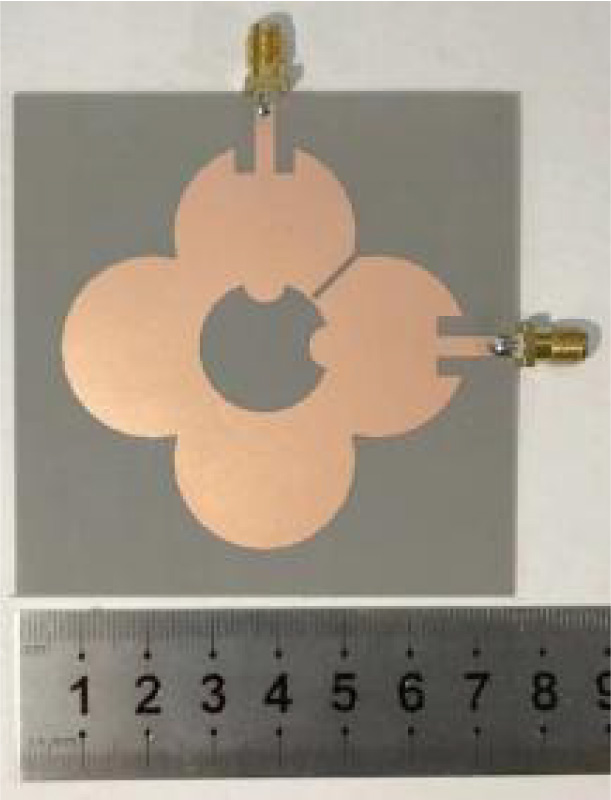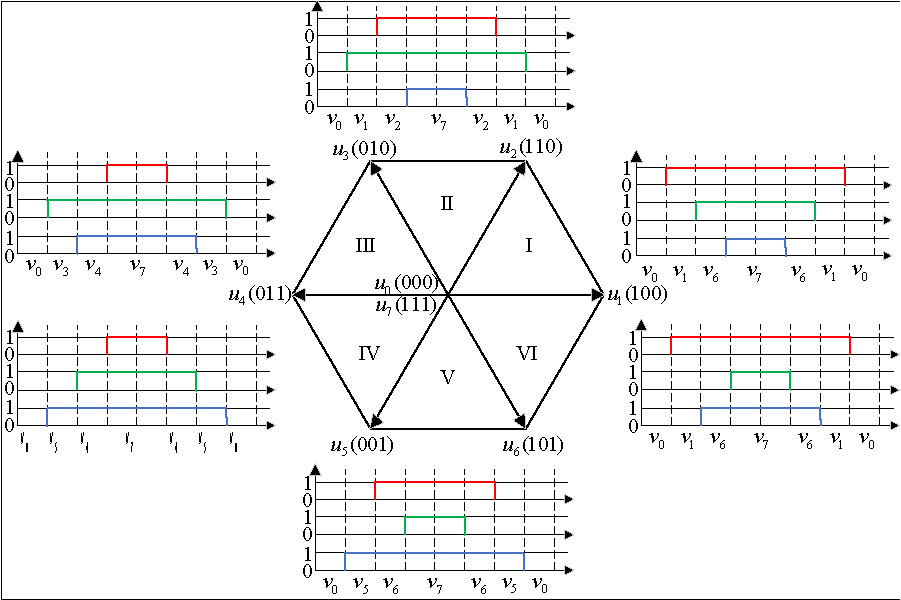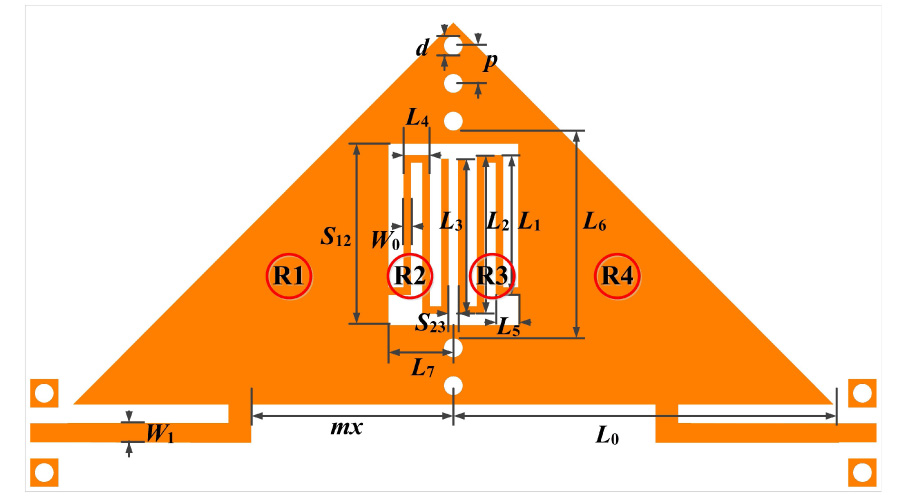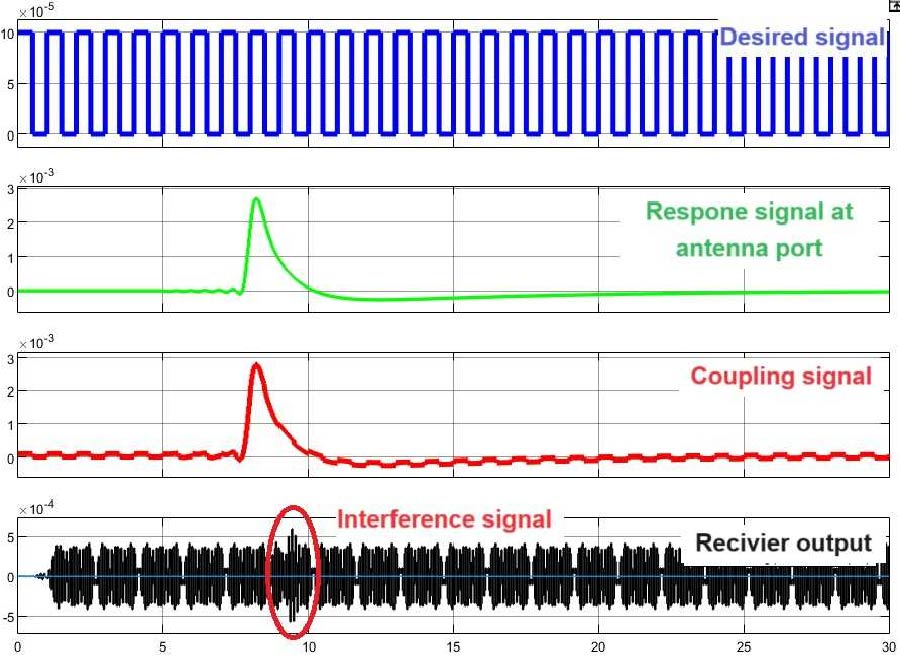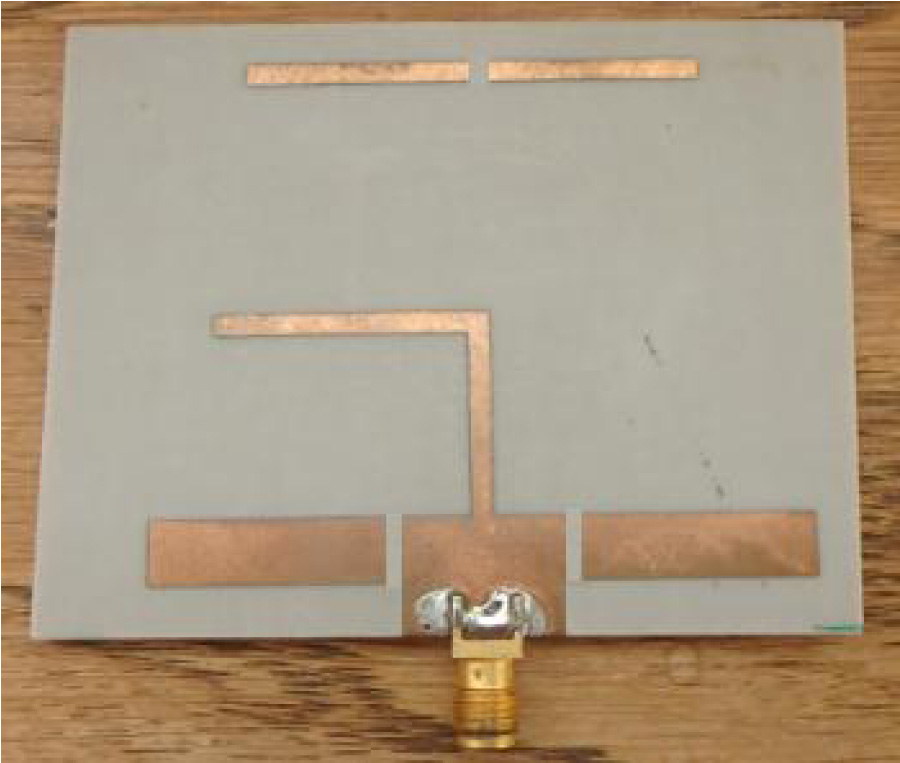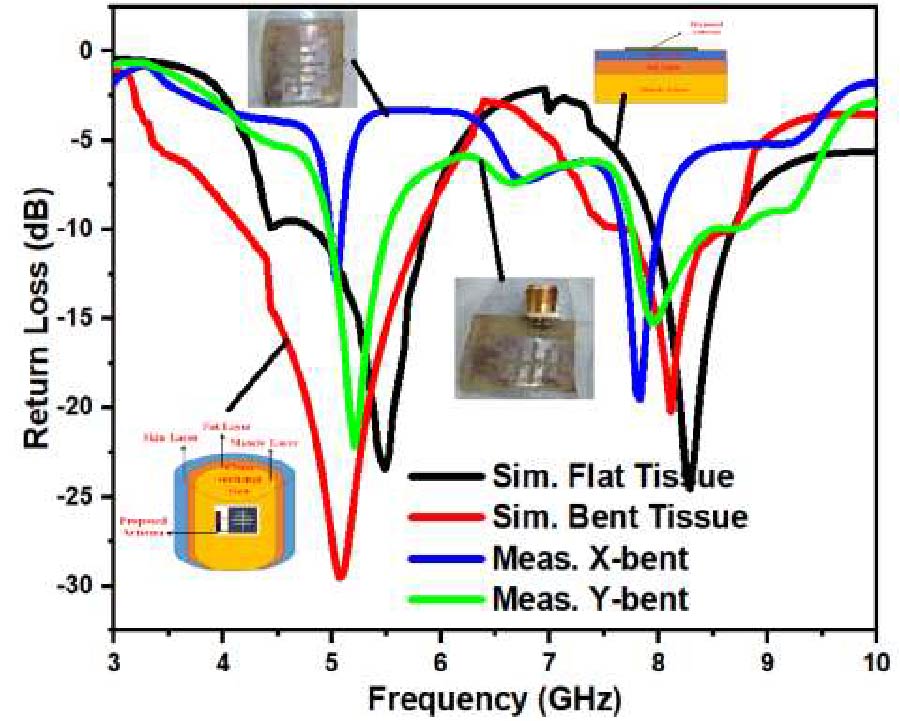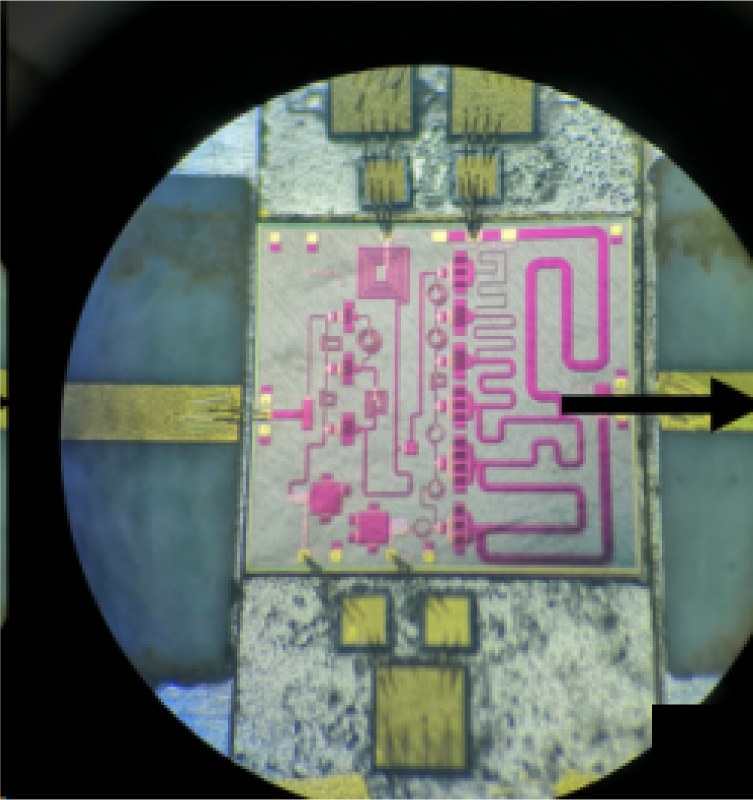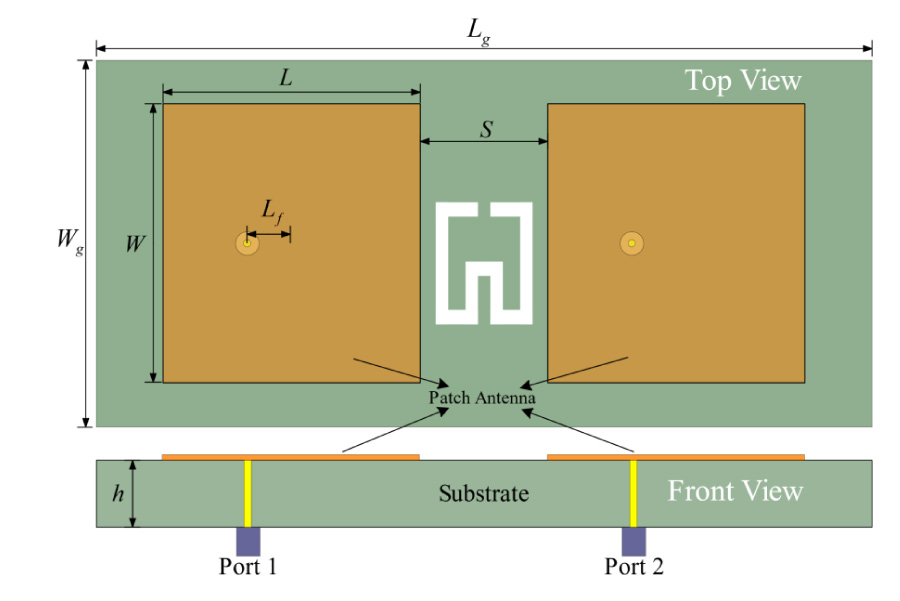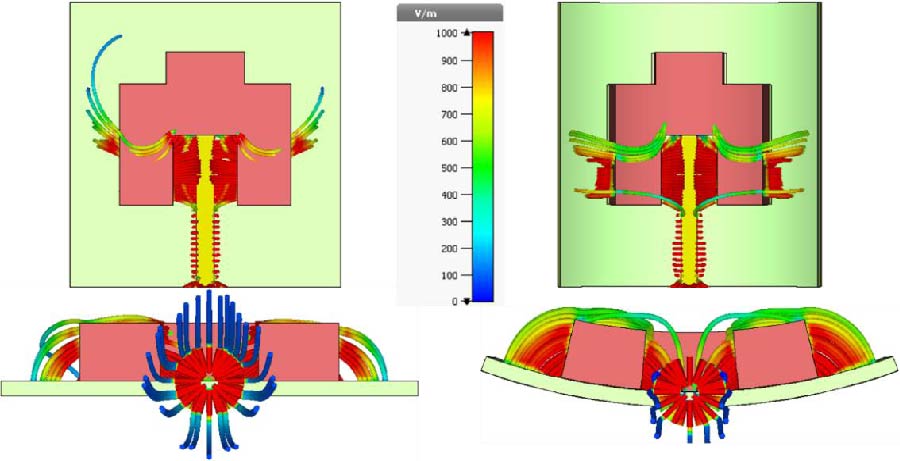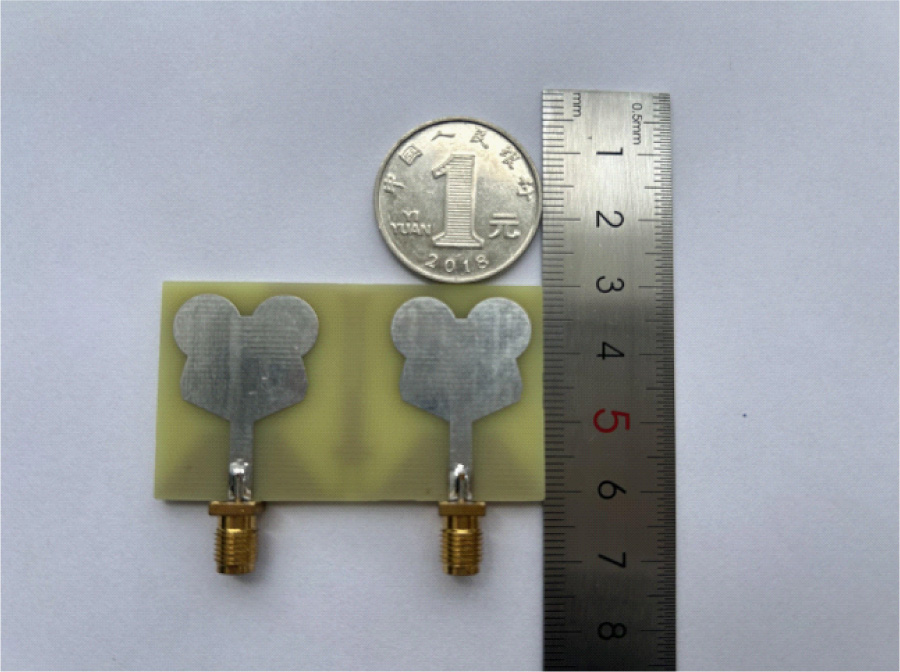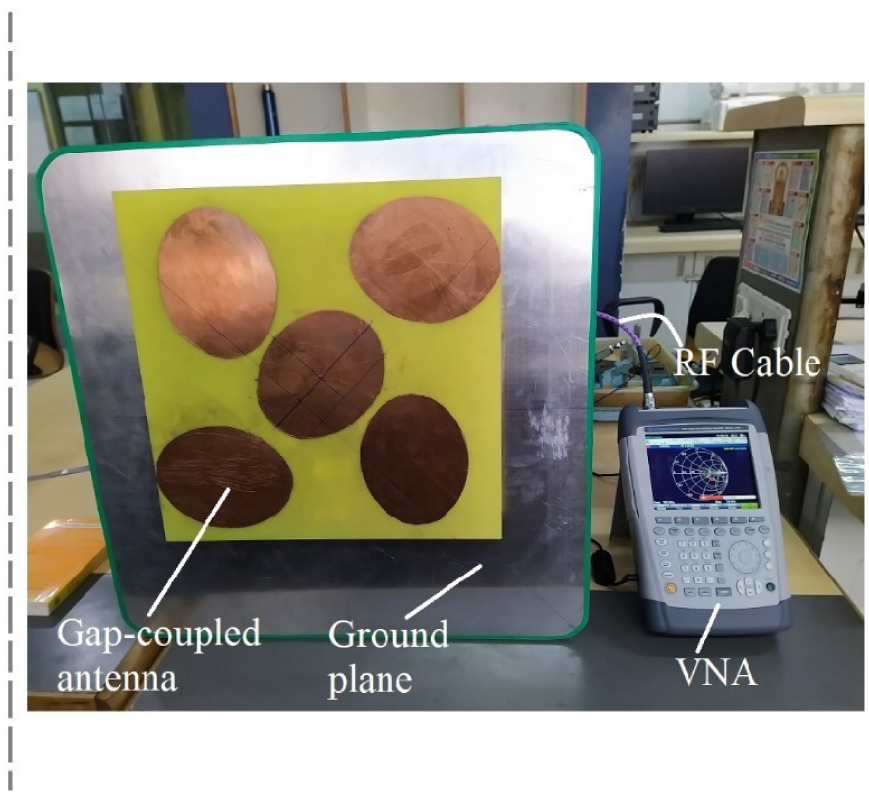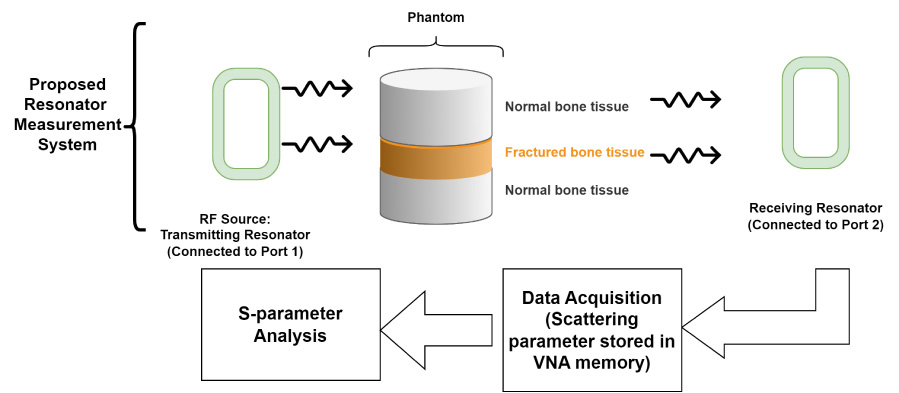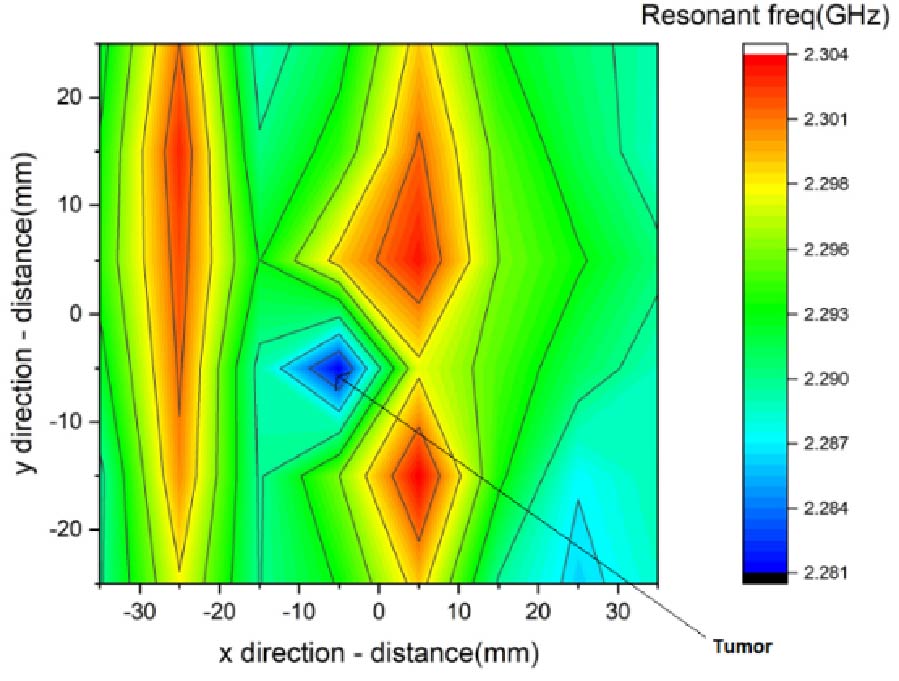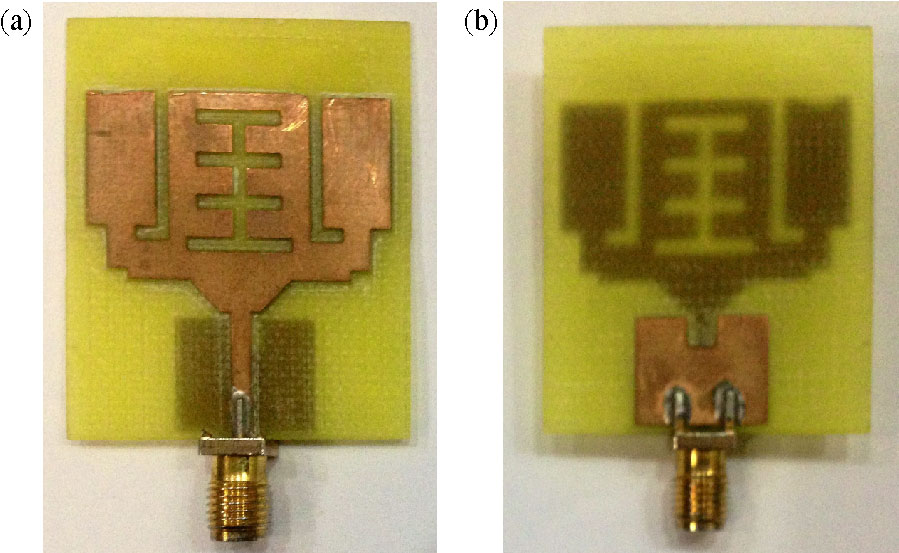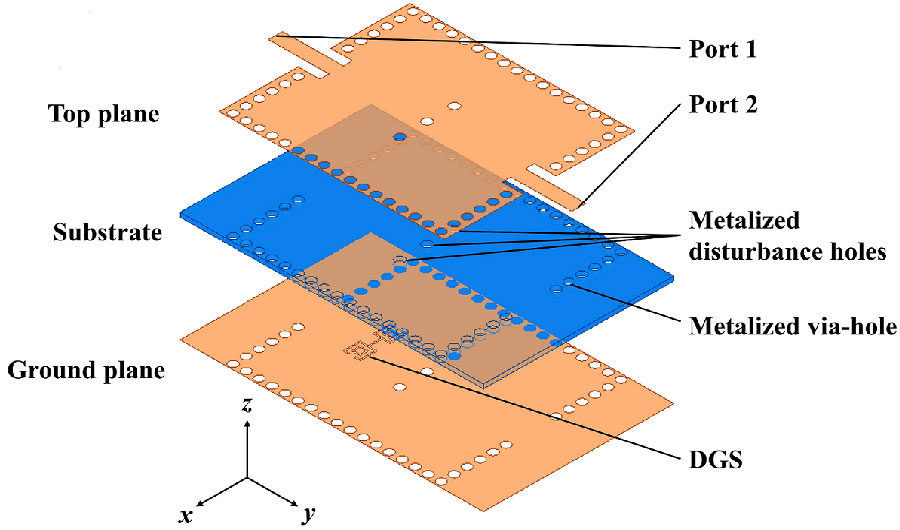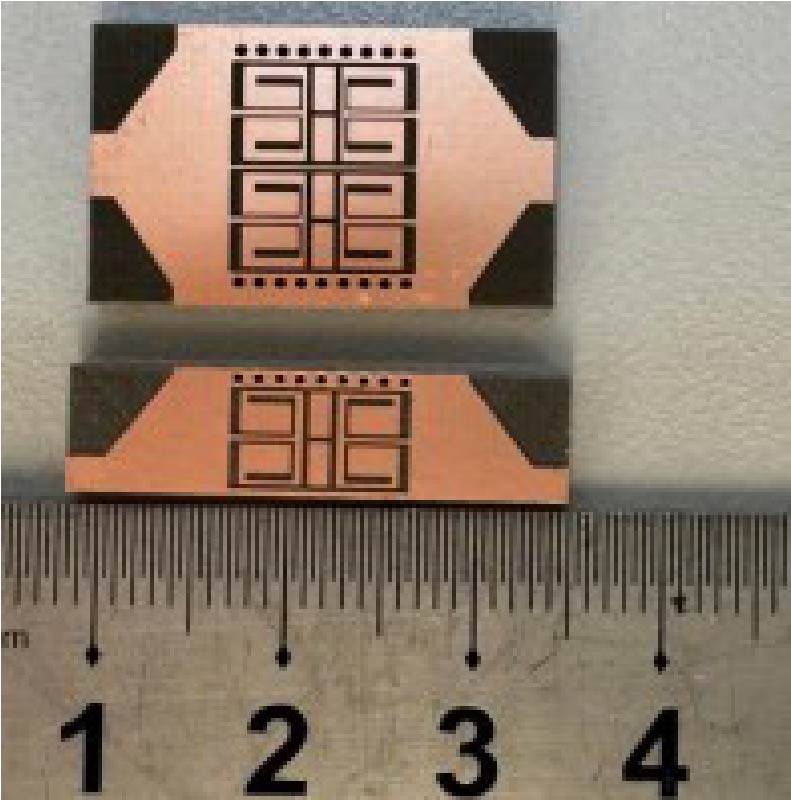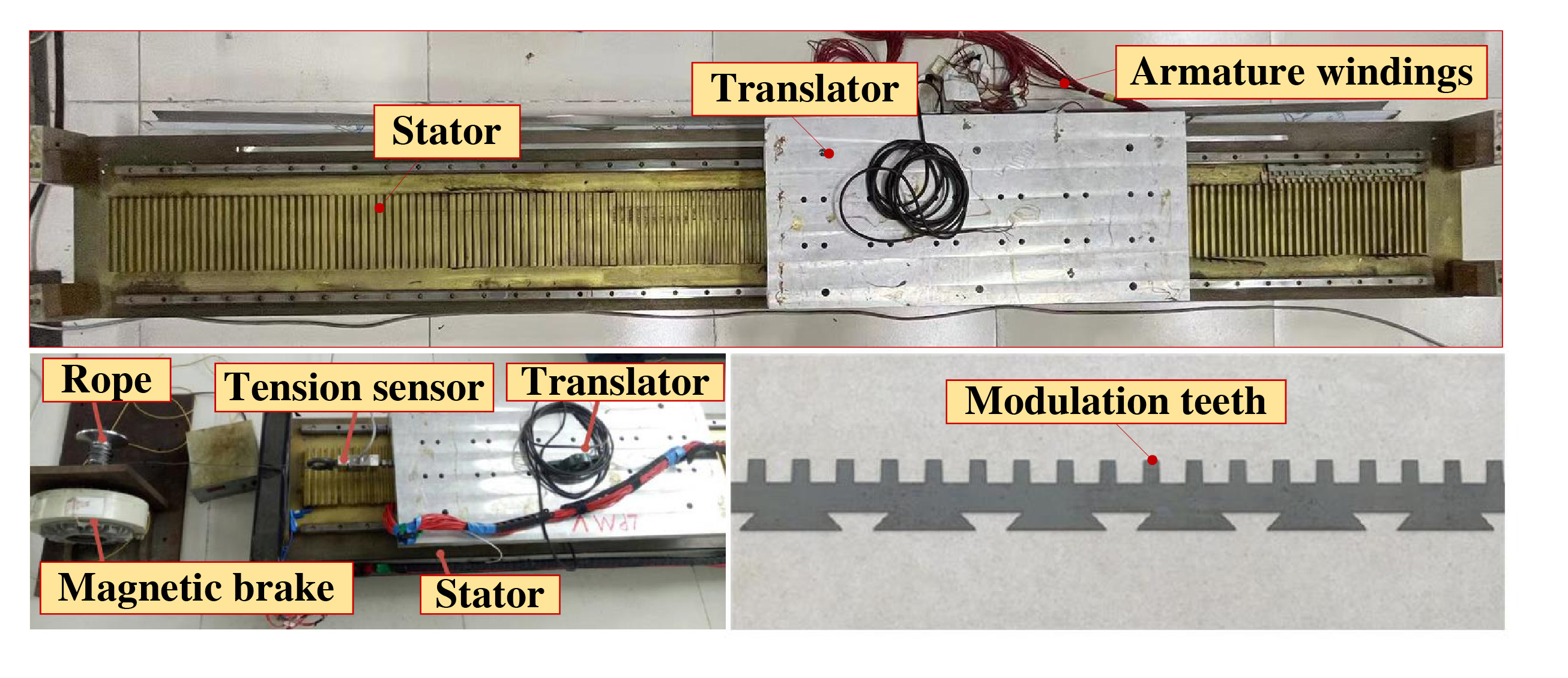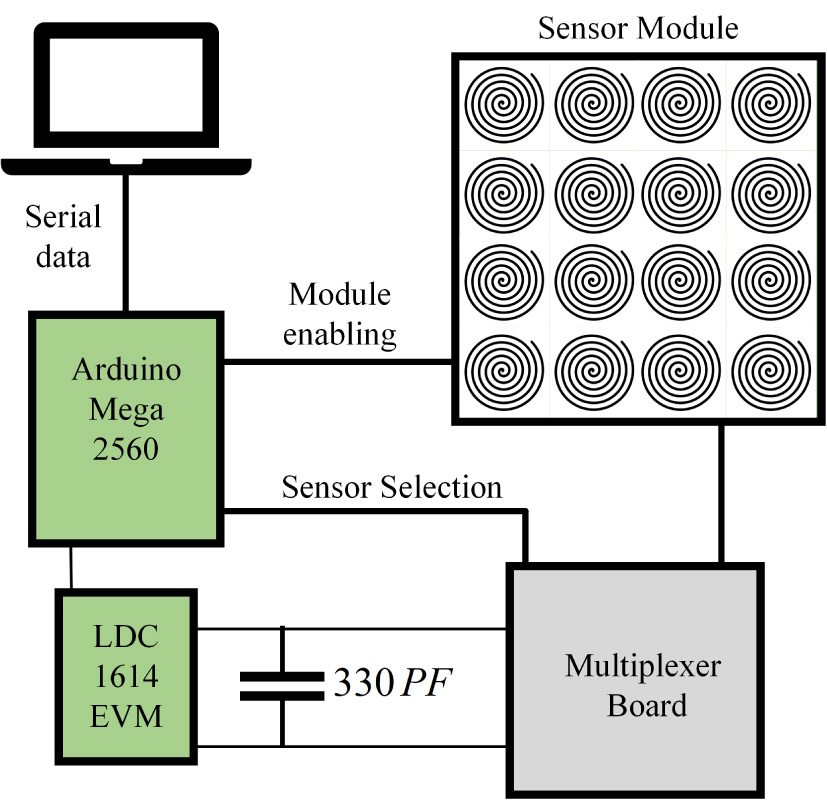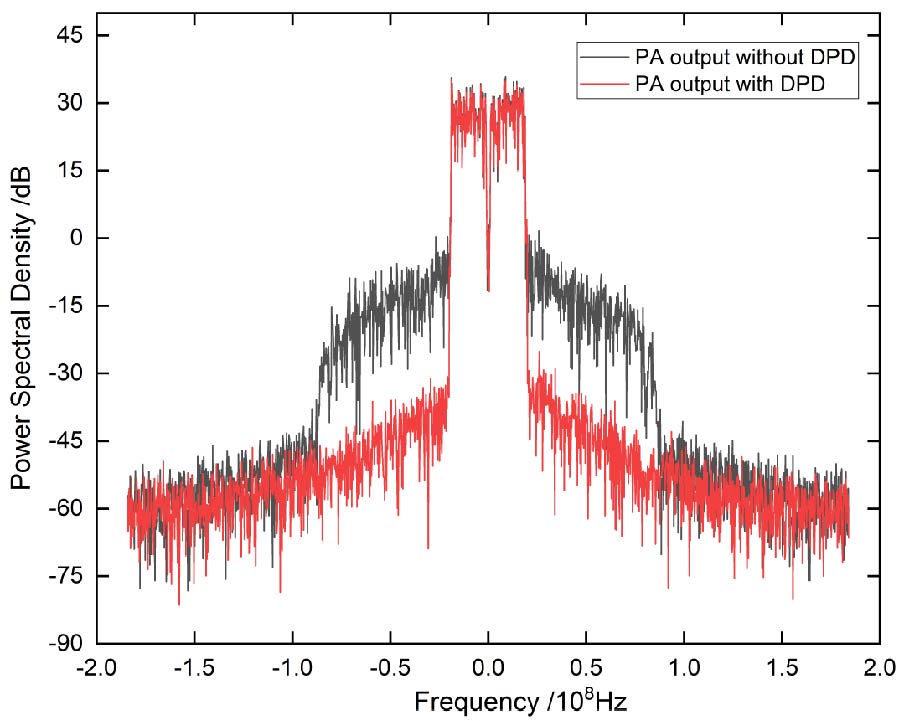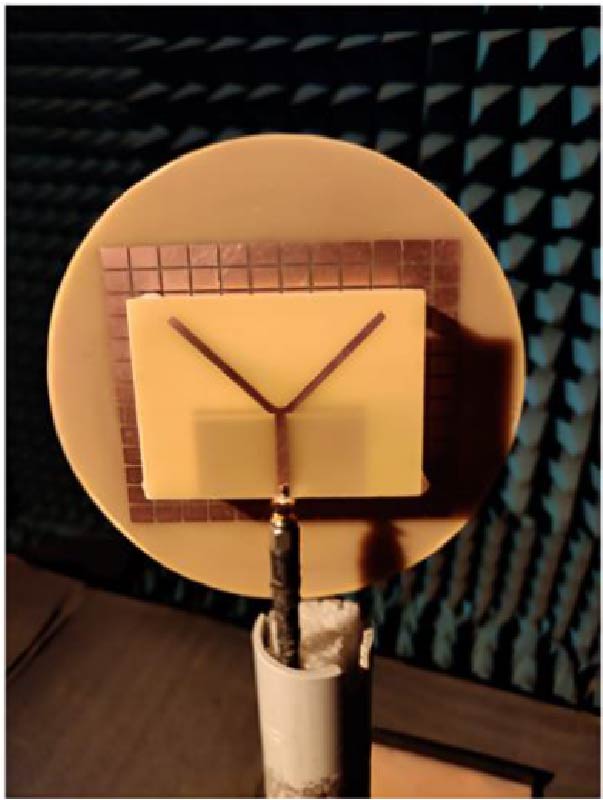A Frog-Shaped UWB MIMO Antenna Design for 5G
Shanhua Yao,
Tianchu Yang,
Xiaorong Qiu and
Xiang Li
In this paper, a frog-shaped ultra-wideband (UWB) multiple-input multiple-output (MIMO) antenna is proposed for 5G applications in the n77, n78, n79, and 6 GHz bands with a compact antenna structure of 31×55×1.5 mm3. The designed antenna consists of two frog-shaped monopole antennas and a floor from which part has been removed, and the operating bandwidths range from 3.05 to 13.38 GHz, which meets the design criteria for UWB. The T-shaped floor with two T-shaped slots impedes the flow of coupling currents and improves the isolation of the antenna. This results in an isolation of less than -17 dB over the entire operating bandwidth and less than -20 dB in the 5G band. In addition, the envelope correlation coefficient (ECC) is less than 0.007, the diversity gain (DG) more than 9.96, the total active reflection coefficient (TARC) less than -30 dB, and the channel capacity loss (CCL) less than 0.34 bit/s/Hz. The measured and simulated results agree with each other, demonstrating their potential application in 5G communication systems.
